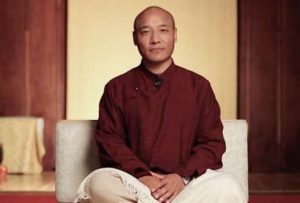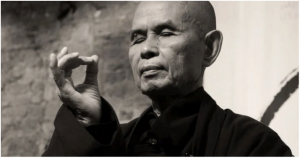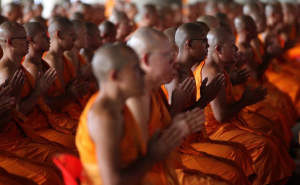
The development of virtuous conduct helps us to relinquish lust. The calm of concentration and mental culture help us to relinquish hatred. Insight through Right Understanding and cultivated meditation develop direct wisdom, which gradually helps us see through and dispel ignorance and delusion.
The opening passage of the Mahasatipatthana Sutta (DN 22) reads as follows:
“This is the only way monks for the purification of beings, for the overcoming of sorrow and lamentation, for the disappearance of pain and grief, for reaching the Noble Path, for the realization of Nibbana, namely the Four Foundations of Mindfulness.
“Herein Monks [in the teaching], a monk dwells in contemplating the body in the body, ardent, clearly comprehending and mindful, overcoming covetousness and grief in the world; he dwells contemplating the feeling in the feelings, ardent clearly comprehending and mindful, overcoming covetousness and grief in this world; he dwells contemplating the consciousness in the consciousness, ardent, clearly comprehending and mindful, overcoming covetousness and grief in this world; he dwells contemplating the dhamma in the dhammas, ardent, clearly comprehending and mindful, overcoming covetousness and grief in this world.”
In the above quotation, the Buddha is saying that there is only one way for the purification of beings: the Four Foundations of Mindfulness. This means that not only is there no other way than penetrating directly through the contemplation of body, feeling, consciousness, and the dhammas, but that there is only one person who can penetrate through—and that is you.
There is only one way to purification and freedom from pain and grief, and that is through the one mind that can see what is going on within as long as you continue to pursue satisfaction through observing, comprehending, and contemplating sensation and feeling.
Only one person can monitor the cleaning and clearing of the mind as it is operating in process—and that is you.
Thus, the mind becomes strong enough through clear comprehension and mindfulness, carefully sweeping, so that emotions such as attachment, hatred, depression, and sorrow slowly but finally disappear.
Sati means full, objective mental penetration without losing clear awareness. When we penetrate to the core of an impression or emotion, we see that there really is nothing there that could cause covetousness and grief.
The seventh factor of the Noble Eightfold Path is called the controlling factor. Citing the Satipatthana Sutta, Venerable Nyanasatta Thera says in the Buddhist Publication Society’s Wheel Series 19:
Right Mindfulness (samma sati) has to be present in every skillful or karmically wholesome thought moment (kusala acitta).
It is the basis of all earnest endeavour (appamada) for liberation and maintains in us the ardent energy to strive for Enlightenment or Nibbana.
In his The Buddha’s Path to Deliverance, Ven. Nyanatiloka Mahathera, translated in slightly different wording, cites the Buddha from the classical texts (MN. 77) as follows:
“And further . . . I have shown to my disciples the way to develop the four applications of mindfulness (satipatthana):
“Here the monk dwells in contemplation of the body . . . feeling . . . mind . . . mind-objects, ardent, clearly conscious and mindful, after putting away worldly greed and grief.
“And, further, I have shown them the way to develop the four right efforts (sammappadhana): Here the monk incites his will, strives, puts forth his energy, strains his mind, in order to avoid the arising of evil, unwholesome states. . . . To overcome them . . . to arouse wholesome states . . . to bring them to growth and full development.
“And further I have shown them the way to develop the four paths of power (iddhipada): Here the monk develops the road to power accompanied by concentration of will . . . energy . . . mind . . . reflection.
“And further, I have shown them the way to develop the five mental faculties (indiriya): Here the monk develops faith . . . energy . . . mindfulness . . . concentration . . . wisdom . . . leading to peace and enlightenment.
“And further I have shown them the way to develop the five mental powers (bala). Here the monk develops the power of faith . . . energy . . . mindfulness . . . concentration . . . wisdom, leading to peace and enlightenment.
“And further I have shown them how to develop the seven factors of enlightenment (bojjhanga): Here, the monk develops the factors of enlightenment, bent on solitude, on detachment, on cessation, and ending in deliverance, namely, mindfulness . . . investigation of phenomena . . . energy . . . rapture . . . tranquillity . . . concentration . . . equanimity.
“And further I have shown them the way to develop the Noble Eightfold Path (ariya-atthangika-magga): Here the monk develops right understanding, right thought, right speech, right action, right livelihood, right effort, right mindfulness, and right concentration.”
Now, this might seem a lot to understand on one reading. The thing to do, therefore, is to go back to the beginning of Ven. Nyanatiloka’s quotation above, and with focused concentration think and work your way mentally through what the Buddha is saying (and do some research if necessary). This can become an introduction to doing it properly, as you gradually learn how to become more firm in the foundations of your practice.
The above text might intimidate us and make us shy off, thinking: “This is too much for me to comprehend! It is too much to accomplish all at once!” But don’t fall into the mental trap of backing off and thinking that it is impossible to accomplish. It doesn’t work that way. Just as a temple is built stone by stone, with the monk physically working, concentrating with one-pointed mindfulness on the laying of one stone after another, so the practice is comprehended and built up in series of successive actions—one by one.
It is all there to comprehend in the above quotation. If you know how to read and understand it carefully. There are no secrets about the path—there are only the stages that cannot be explained in comparative terms using common language, as the best things can only be known through direct practice, experience, and knowing.
Actually, there is no temple; there is only a series of stones, built up, one by one, which come together in temporary unity. Gradually, as time passes, the stones begin to break apart and deteriorate, slowly, one by one, until eventually everything is gone and all has turned into dust. This dust will, in turn, go through a process into differing elements, atoms, and energy, which also begin and cease, one by one, with everything dependently arising and ceasing through a process which knows no beginning and no end.
Similarly, there is no monk. What we call “him” or “her” is just a process of changing elements and atoms and energy vibrations as a part of a wider cosmic process that has no beginning and no end. Yet, in common language, as a result of wrong view, we continue to speak of temples and monks as though they were permanent entities.
References
Nyanasatta Thera. 2000. Foundations of Mindfulness. Kandy: Buddhist Publication Society.
Nyanatiloka Mahathera. 2000. The Buddha’s Path to Deliverance. Kandy: Buddhist Publication Society.
Soma Thera. 1998. The Way of Mindfulness: The Satipatthana Sutta and Its Commentary. Kandy: Buddhist Publication Society.rations
Related features from BDG
On Mind and Body
The Mind Refining the Mind
Insight Develops Mind Power












